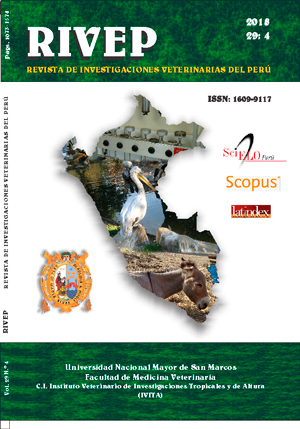Fungal composition of environmental aerosols in barnyards
DOI:
https://doi.org/10.15381/rivep.v29i4.14436Keywords:
bioaerosols, environmental micota, horsesAbstract
The aim of this work was to evaluate the fungus present in horse corrals, using simple sedimentation as a sampling method. This was done at the end of winter collecting 20 samples from the perimeter of corrals. Samples were obtained by placing Petri dishes with Saboureaud agar 2% glucose supplemented with 0.05% penicillin open at 58 and 113 cm from the ground. The most representative genus in the two sampled levels were Cladosporium sp and Sepedonium sp. It was also identified genus of clinical importance in equines such as Aspergillus, environmental opportunist able to colonize the paranasal sinuses and guttural bags of horses and produce rhinopharyngitis, sinusitis and fungal guturitis.Downloads
Downloads
Published
Issue
Section
License
Copyright (c) 2018 Natalia Soledad Lanza

This work is licensed under a Creative Commons Attribution-NonCommercial-ShareAlike 4.0 International License.
AUTHORS RETAIN THEIR RIGHTS:
a. Authors retain their trade mark rights and patent, and also on any process or procedure described in the article.
b. Authors retain their right to share, copy, distribute, perform and publicly communicate their article (eg, to place their article in an institutional repository or publish it in a book), with an acknowledgment of its initial publication in the Revista de Investigaciones Veterinarias del Perú (RIVEP).
c. Authors retain theirs right to make a subsequent publication of their work, to use the article or any part thereof (eg a compilation of his papers, lecture notes, thesis, or a book), always indicating the source of publication (the originator of the work, journal, volume, number and date).










